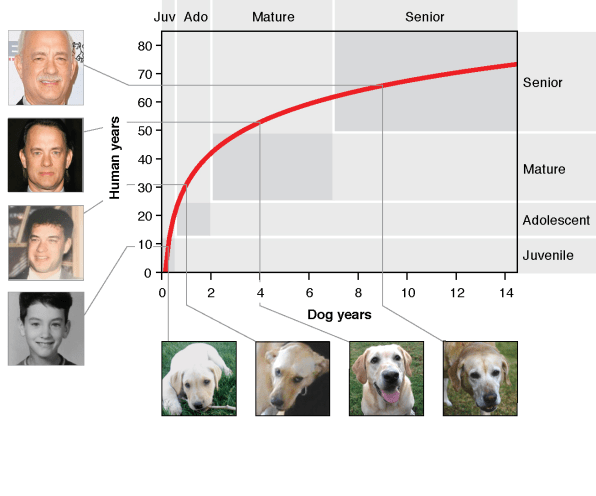This is how old your dog really is in human years, and it’s not age times 7
As the dog days of summer approach, it’s time to confirm, once and for all, how old your dog really is in human years. University of California San Diego School of Medicine researchers have nuzzled their way into this age-old inquiry, digging into the canine and human genomes to create a more accurate graph of your dog’s age in human years. You can see it here:

Fido is older than you think! To create this helpful graph, the researchers studied the genomes of 105 Labrador retrievers and traced the methylation patterns in the retriever and human genomes, which provide clues to a genome’s age. They found that dogs and humans age at vastly differing rates at certain points in their lifespans.
“A nine-month-old dog can have puppies, so we already know that the 1:7 ratio wasn’t an accurate measure of age,” noted professor of medicine Trey Ideker in the study.
But in later life, after age 7, dogs’ aging slows significantly. So while a 1-year-old dog is roughly equivalent to a 30-year-old human, a 9-year-old dog is just north of 65 in human years, according to the chart. (Note that the graph is based on Labrador retrievers—some breeds live longer or shorter.)
The researchers have aspirations beyond helping you realize that your dog is “older” than you thought: Their study articulates a new formula for epigenetically determining the age of a cell, tissue, or organism, the first that is transferable across species, with many possible applications, such as pinpointing the age of adopted dogs or measuring the efficacy of anti-aging interventions.
(50)



